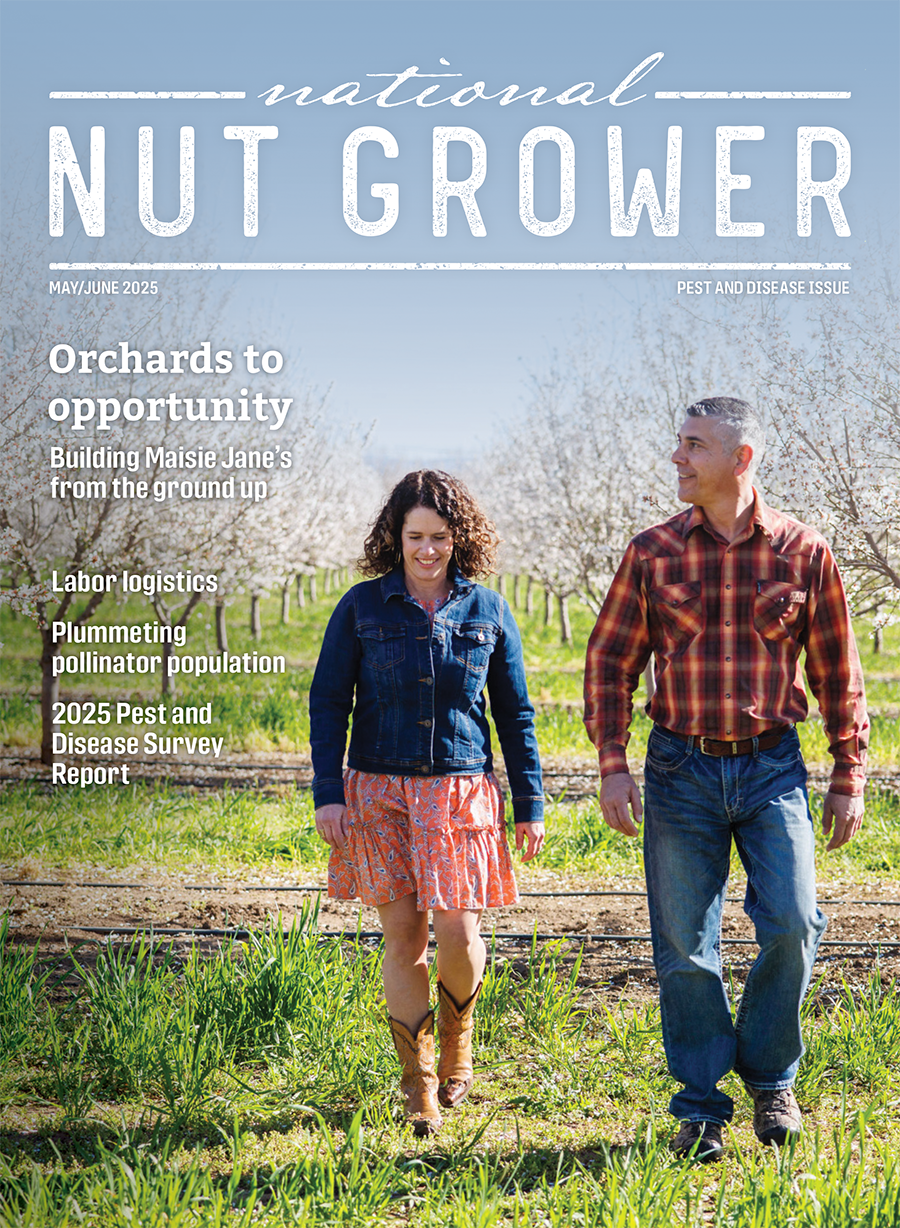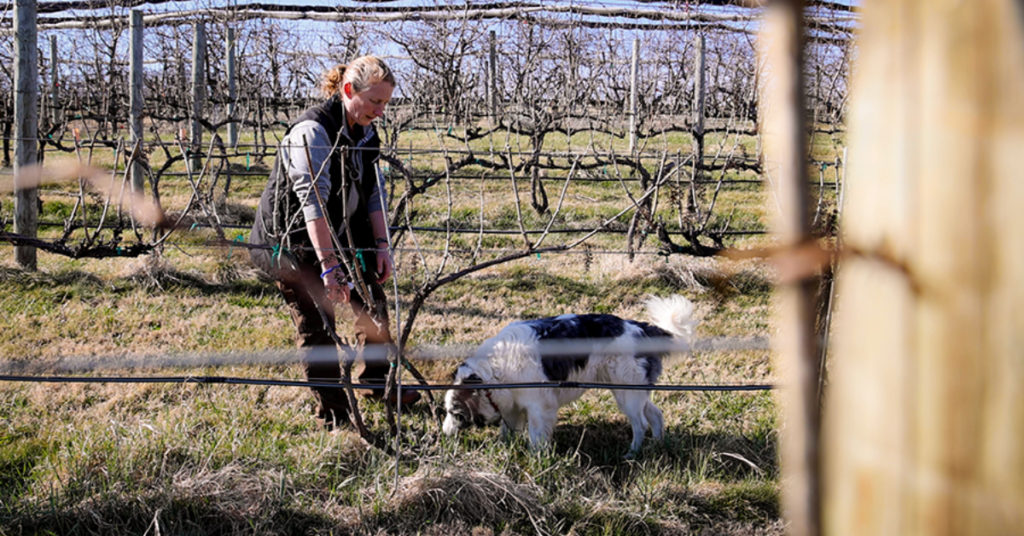
November/December 2023
Dog’s nose detects spotted lanternfly eggs
Researchers are employing a novel approach to help growers discover and deal with spotted lanternflies (SLF) and powdery mildew.
Virginia Tech scientists are working with dog handlers to train canines to detect SLF, a destructive pest that feeds on a wide variety of crops and plants, including almond and walnut trees as well as apples, cherries, peaches and grapes.
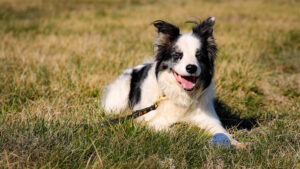
While detections are presently limited to the East Coast and eastern parts of the Midwest, SLF also poses threats to western regions.
“The West Coast should be very concerned about this pest because of numerous commercial crops, landscape plants, and wild hosts that could support SLF populations,” said Surendra Dara, entomologist and director and professor in Oregon State University’s North Willamette Research and Extension Center in Aurora, Oregon.
WEST COAST CONCERN
Powdery mildew, a disease that can be destructive when unmanaged, can spread quickly due to the nature of its reproduction. The researchers determined that dogs’ strong olfactory capabilities can detect powdery mildew better than humans, said Mizuho Nita, a Virginia
Virginia Tech scientists, including dog trainer and doctoral student Sally Dickinson, are examining how dogs can discover spotted lanternflies. The pest damages grapes and other crops, including apples, peaches, cucumbers and tree nuts. Photos courtesy of Virginia Tech.

Cooperative Extension specialist and an associate professor of plant pathology in Virginia Tech’s School for Plant and Environmental Sciences. The insect sucks sap, young stems and leaves, causing tree withering, reducing photosynthesis, weakening plants and eventually leading to plant death.
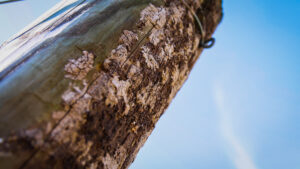
Feeding causes plants to weep or ooze, creating a fermented odor. Trunks display a grayish-black trail of wounds. The insects excrete large amounts of honeydew, covering stems and leaves as well as the ground below infested plants.
SLFs have been detected in Virginia, Maryland, Pennsylvania, New Jersey, New York and New England. Smaller infestations have been reported in counties in Ohio, Michigan, Indiana, North Carolina and West Virginia. Quarantine zones are in place in Virginia, Maryland, Pennsylvania, Delaware and New Jersey.
SLF can be spread long distances through movement of infested material or items containing spotted lanternfly egg masses. SLF can also be a big nuisance to the landscape and residential industries.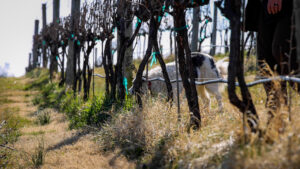
SLF is the main reason for Dara’s outreach that began in 2014. “California is especially at a higher risk because of the importance of grapes, peaches and other crops and the presence of SLF’s favorite host, the tree-of-heaven, distributed all over the state,” he said.
Because SLF hasn’t yet been detected in the West yet, no studies have been initiated for its detection or control, Dara said.
LIMITED NUT STUDIES
Dara is checking with colleagues investigating SLF host preference to see if SLF is a significant threat to almonds, pistachios, and pecans. One of Dara’s colleagues has included almonds in a study, which hasn’t concluded. An contact of Dara’s who works with a grower said SLF hasn’t been found feeding on almonds.
“Walnut growers should watch for SLF,” he said. Classical biological control with natural enemies from an invasive pest’s native area is usually the best strategy for invasive pests, Dara said. Classical biocontrol studies in California suggest imported parasitoids or a pest’s natural enemies are not highly specific to SLF, so their release remains uncertain, he said. However, studies indicate that a parasitoid introduced for spongy moth control shows some native natural enemies attacking SLF.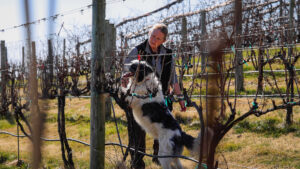
“It appears that we do not have any natural enemy that is very specific to SLF,” Dara said. “That is one major concern, but some native or previously introduced natural enemies seem to be attacking SLF providing some control. Another concern, not just for the nut growers, is the ability of SLF to hitchhike and the spread of its favorite host, the tree-of-heaven, throughout California, which allows the pest to invade, establish and spread.”
Because several wild hosts favor the pest and since it can hitchhike on inanimate objects, SLF possesses a higher chance to spread, survive and multiply, Dara said.
“So, not just the farming community, but the general public should also be aware of this pest and its potential threat to their region,” he said.
Dara’s advice to nut growers is to watch for research updates and quarantine alerts so they can receive the latest information about SLF’s biology, management
and spread. “The best strategy right now is to be able to recognize SLF, do everything to prevent its introduction, and notify local authorities if you find one,” he said.
CANINE DETECTION
A canine’s sense of smell is equivalent to detecting a teaspoon of sugar in an Olympic-size swimming pool.
Researchers look to apply the canines’ work to other economically important pests and diseases and look to develop a network of citizen scientist dog handlers who can be dispatched to detect the latest invasive species.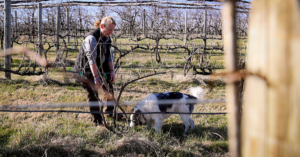
“We picked powdery mildew because of its relatively obvious scent, but we may find dogs can sniff out other pests and diseases,” Nita said. “I think it is worth exploring in the future.”
For SLF, researchers found dogs can be trained to detect spotted lanternfly eggs, which can help egg detection, Nita said. “I think it is useful especially at the front of SLF movement since SLF lay eggs on many different surfaces, including stones and pallets,” he said.
SLF can be managed through insecticides and culturally through traps. Netting can prevent large numbers of adults from establishing on vines, according to Virginia Tech Cooperative Extension.
Nita said the project is more about detection, not combatting the pest.
“For management, we do have other tools, but in order to have effective management, we need to find out what is causing the issue,” Nita said.









